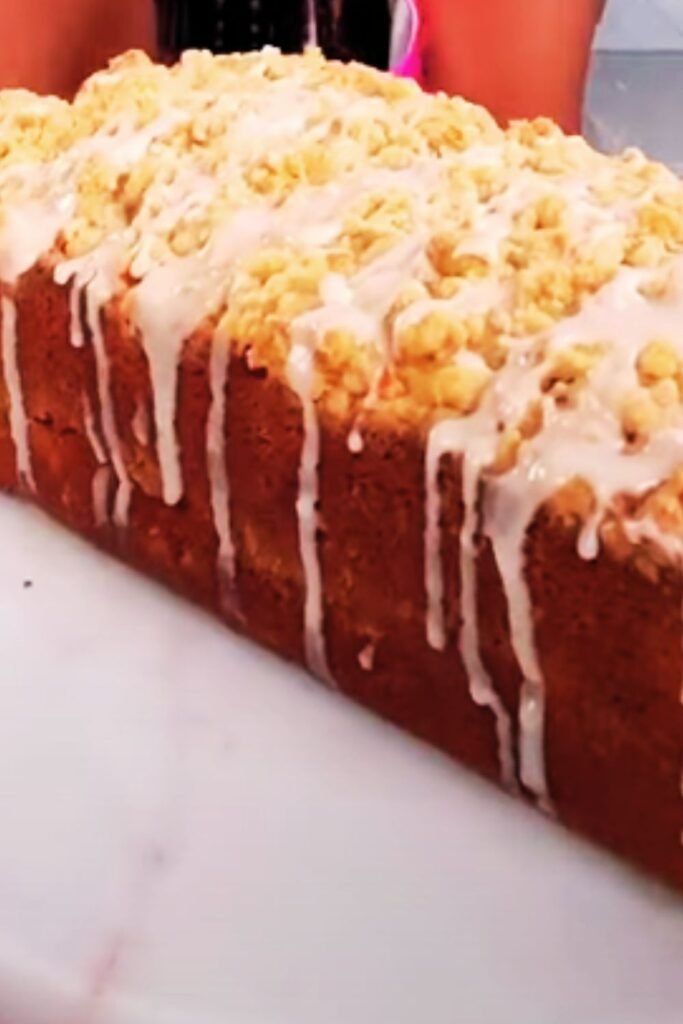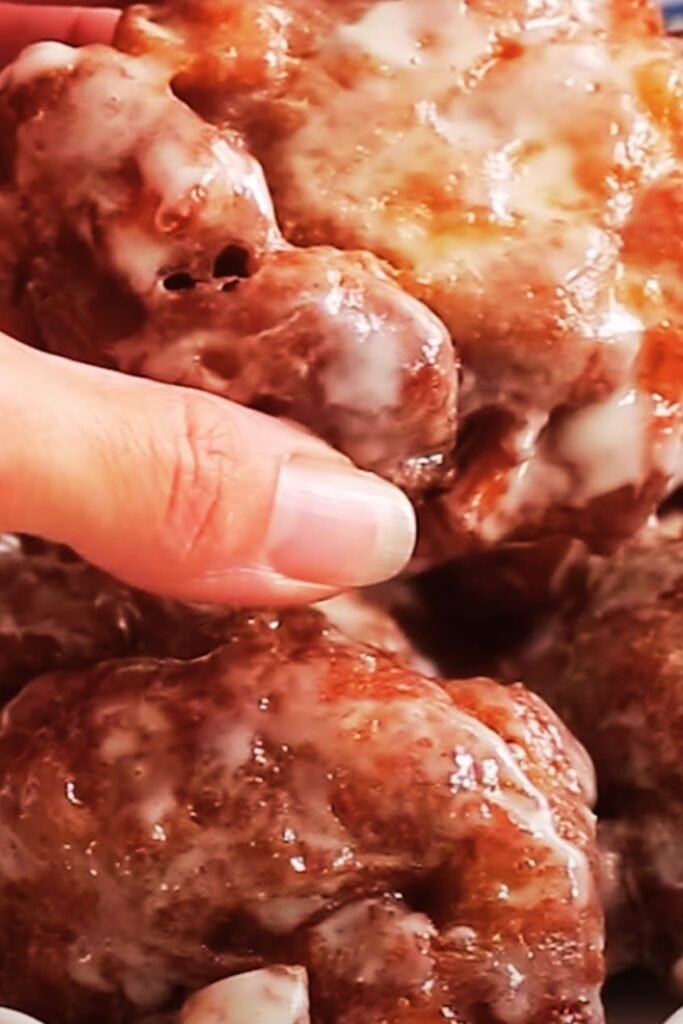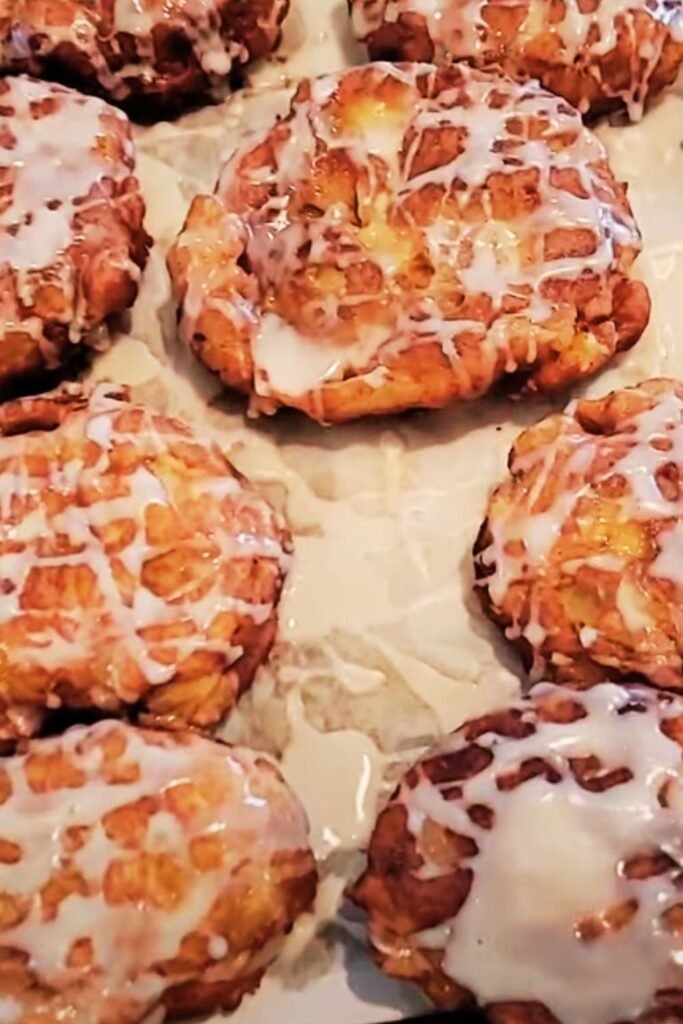When autumn arrives and apple orchards beckon with their crisp, sweet bounty, my kitchen transforms into a haven of warm spices and comforting aromas. Among all the apple desserts I’ve mastered over the years, baked apple fritters hold a special place in my heart. They deliver all the beloved flavors of traditional deep-fried fritters while offering a lighter, more wholesome approach that doesn’t compromise on taste or texture.
I’ve spent countless hours perfecting this recipe, experimenting with different apple varieties, adjusting spice ratios, and fine-tuning baking techniques. What I’ve discovered is that baked apple fritters can be just as satisfying as their oil-laden counterparts, perhaps even more so when you consider the pride that comes from creating something both delicious and nutritious.
Understanding Apple Fritters: A Classic Reimagined
Apple Fritter : A traditional pastry featuring chunks of fresh apples mixed into a spiced batter, typically deep-fried and glazed with sugar
Baked Apple Fritter : A healthier adaptation that achieves similar flavors and textures through oven-baking rather than deep-frying
Glaze : A thin, sweet coating made from powdered sugar and liquid that creates a glossy finish on baked goods
The beauty of baked apple fritters lies in their versatility and health consciousness. While traditional fritters absorb significant amounts of oil during the frying process, my baked version relies on careful ingredient balance and proper oven technique to create that coveted tender interior and slightly crisp exterior.
Essential Ingredients and Their Roles
Creating exceptional baked apple fritters requires understanding how each ingredient contributes to the final product. I’ve learned that success depends not just on what you include, but how you treat each component.
| Ingredient | Purpose | Quality Indicators | Substitution Options |
|---|---|---|---|
| Fresh Apples | Primary flavor and texture | Firm, crisp varieties like Honeycrisp or Granny Smith | Pears (adjust liquid accordingly) |
| All-Purpose Flour | Structure foundation | Fresh, sifted, room temperature | Whole wheat flour (use 3/4 amount) |
| Granulated Sugar | Sweetness and moisture retention | Fine crystals, no clumping | Coconut sugar, brown sugar |
| Brown Sugar | Depth of flavor and moisture | Soft, no hardening | Muscovado sugar, maple sugar |
| Eggs | Binding and leavening | Room temperature, fresh | Flax eggs for vegan option |
| Butter | Richness and texture | Unsalted, high quality | Coconut oil, vegetable oil |
| Baking Powder | Primary leavening agent | Fresh, active (test in water) | Self-rising flour adjustment |
| Cinnamon | Signature spice flavor | Ground, aromatic, recent purchase | Pumpkin pie spice blend |
| Vanilla Extract | Flavor enhancement | Pure extract, not imitation | Almond extract (use half amount) |
| Milk | Moisture and texture | Whole milk preferred | Buttermilk, almond milk |
The apple selection process deserves special attention. I’ve tested numerous varieties, and my favorites include Honeycrisp for their exceptional crunch and balanced sweetness, Granny Smith for their tartness that cuts through rich batter, and Braeburn for their complex flavor profile. Avoid overly soft varieties like Red Delicious, which can turn mushy during baking.
Step-by-Step Baking Instructions
My perfected technique ensures consistent results every single time. I’ve made these fritters dozens of times, adjusting and refining until I achieved the ideal balance of flavors and textures.
Preparation Phase
• Preheat your oven to 375°F (190°C). I’ve found this temperature provides the perfect balance between cooking the interior thoroughly and achieving a golden exterior.
• Prepare your baking sheet by lining it with parchment paper and lightly greasing the surface. This prevents sticking while allowing easy removal.
• Dice your apples into uniform 1/4-inch pieces. Consistency matters here – uniform pieces ensure even cooking and distribution throughout the fritters.

Creating the Perfect Batter
The batter consistency determines your fritters’ final texture. I’ve learned that overmixing creates tough, dense results, while undermixing leaves flour pockets that taste chalky.
• Combine dry ingredients in a large mixing bowl: 2 cups all-purpose flour, 1/2 cup granulated sugar, 1/4 cup brown sugar, 2 teaspoons baking powder, 1 teaspoon ground cinnamon, and 1/2 teaspoon salt.
• Whisk wet ingredients separately: 2 large eggs, 1/2 cup melted butter, 3/4 cup milk, and 2 teaspoons vanilla extract. Room temperature ingredients blend more easily and create smoother batter.
• Fold wet ingredients into dry ingredients using a rubber spatula. Mix just until flour disappears – some lumps are perfectly acceptable and preferred.
• Gently fold in diced apples, ensuring even distribution without overworking the batter.
Shaping and Baking Techniques
Proper shaping influences both appearance and cooking evenness. I use an ice cream scoop for consistent portion sizes, which ensures uniform baking times.
• Scoop batter into mounds approximately 1/4 cup each, spacing them 2 inches apart on your prepared baking sheet.
• Gently flatten each mound with the back of a spoon, creating a slightly irregular, rustic appearance that mimics traditional fritters.
• Bake for 18-22 minutes until golden brown and a toothpick inserted in the center comes out with just a few moist crumbs attached.

Nutritional Analysis and Health Benefits
| Nutrient per Serving | Traditional Fried | Baked Version | Health Impact |
|---|---|---|---|
| Calories | 320-380 | 240-280 | 25-30% reduction |
| Total Fat | 18-22g | 8-12g | Significantly lower |
| Saturated Fat | 6-8g | 3-5g | Heart-healthy reduction |
| Fiber | 2g | 3-4g | Increased from whole apples |
| Vitamin C | 6% DV | 8% DV | Enhanced from fresh fruit |
| Potassium | 180mg | 220mg | Better electrolyte content |
| Added Sugar | 24g | 18g | Reduced sweetener dependency |
Baking these fritters instead of frying delivers remarkable health improvements without sacrificing the comfort food experience. The reduced oil content makes them suitable for those watching their fat intake, while the increased fiber from generous apple content supports digestive health.
Glaze Variations and Finishing Touches
The glaze transforms good fritters into extraordinary ones. I’ve developed several signature variations that complement the apple and spice flavors beautifully.
Classic Vanilla Glaze : Mix 1 cup powdered sugar, 3-4 tablespoons milk, and 1 teaspoon vanilla extract until smooth
Maple Cinnamon Glaze : Combine 1 cup powdered sugar, 3 tablespoons maple syrup, 2 tablespoons milk, and 1/2 teaspoon ground cinnamon
Caramel Glaze : Blend 1 cup powdered sugar, 1/4 cup caramel sauce, and 2-3 tablespoons milk until desired consistency
Cream Cheese Glaze : Whisk 4 oz softened cream cheese, 1 cup powdered sugar, 3 tablespoons milk, and 1 teaspoon vanilla extract
Apply glazes while fritters remain slightly warm but not hot. This timing allows the glaze to adhere properly without melting completely off the surface.
Storage and Serving Recommendations
Proper storage maintains the fritters’ appealing texture and prevents them from becoming soggy or overly dry. I’ve tested various storage methods to determine the most effective approaches.
Short-Term Storage (1-2 Days)
• Store in an airtight container at room temperature • Place parchment paper between layers to prevent sticking • Avoid refrigerating glazed fritters, as this can make them soggy
Long-Term Storage (Up to 3 Months)
• Freeze unglazed fritters individually on baking sheets • Transfer to freezer bags once completely frozen • Thaw at room temperature and apply fresh glaze before serving

Troubleshooting Common Issues
Through years of baking these fritters, I’ve encountered and solved numerous challenges. Here are the most frequent issues and my proven solutions:
Dense, Heavy Texture : Usually caused by overmixing the batter or using too much flour. Mix ingredients just until combined, and measure flour by spooning it into measuring cups rather than scooping directly.
Dry, Crumbly Results : Indicates insufficient moisture or overbaking. Check your oven temperature with a separate thermometer, and don’t overbake – slightly underdone is better than dry.
Uneven Browning : Often results from uneven baking sheet placement or hot spots in your oven. Rotate the baking sheet halfway through cooking time, and consider using an oven thermometer to verify temperature accuracy.
Glaze Not Adhering : Apply glaze when fritters are slightly warm but not hot. If fritters are too cool, warm them briefly in a low oven before glazing.
Creative Variations and Seasonal Adaptations
My basic recipe serves as a foundation for countless delicious variations. Seasonal ingredients and creative additions keep these fritters exciting throughout the year.
Fall and Winter Variations
• Spiced Apple Cranberry: Add 1/3 cup dried cranberries and increase cinnamon to 1.5 teaspoons • Apple Pecan: Include 1/2 cup chopped toasted pecans for added richness and crunch • Caramel Apple: Swirl 2 tablespoons caramel sauce into the batter and use caramel glaze
Spring and Summer Adaptations
• Apple Berry: Substitute half the apples with fresh blueberries or raspberries • Lemon Apple: Add 2 tablespoons fresh lemon zest and use lemon glaze • Tropical Apple: Include 1/4 cup shredded coconut and use coconut milk in the batter
Serving Suggestions and Pairings
These baked apple fritters shine in various serving contexts, from casual family breakfasts to elegant brunch gatherings. I’ve discovered several presentation and pairing approaches that enhance the overall experience.
Breakfast Service : Serve warm alongside freshly brewed coffee, herbal tea, or fresh apple cider. The combination of warm spices and coffee creates a particularly satisfying morning experience.
Dessert Presentation : Pair with vanilla ice cream or whipped cream for an elevated dessert experience. The temperature contrast between warm fritters and cold accompaniments creates textural interest.
Brunch Buffet : Display on tiered serving stands alongside fresh fruit, yogurt parfaits, and other baked goods. The visual appeal adds elegance to any spread.
Afternoon Snack : Serve with hot chocolate or spiced tea for a comforting afternoon treat that bridges the gap between lunch and dinner.
Questions and Answers
Q. Can I make these fritters ahead of time for a party?
Absolutely! I recommend baking the fritters the day before your event and storing them in an airtight container. Apply the glaze the morning of your party for the freshest appearance and best texture. You can also freeze unglazed fritters up to three months in advance.
Q. What’s the best way to reheat leftover fritters?
I’ve found that a brief warming in a 300°F oven for 5-7 minutes restores their texture beautifully. Avoid microwaving glazed fritters, as this can make the glaze sticky and unpleasant. For unglazed fritters, 20-30 seconds in the microwave works well.
Q. Can I substitute different types of apples in this recipe?
Yes, but choose varieties that hold their shape during baking. My top recommendations include Honeycrisp, Granny Smith, Braeburn, and Gala. Avoid Red Delicious or other very soft varieties that might turn mushy. Mixing two different apple types creates interesting flavor complexity.
Q. Is it possible to make these fritters gluten-free?
I’ve successfully adapted this recipe using a 1:1 gluten-free flour blend. The texture differs slightly – expect them to be a bit more tender and crumbly. Add 1/4 teaspoon xanthan gum if your flour blend doesn’t include it. Allow the batter to rest for 10 minutes before baking to improve texture.
Q. How can I tell when the fritters are perfectly done?
Look for a golden-brown color and a toothpick inserted in the thickest part that comes out with just a few moist crumbs. The fritters should spring back lightly when touched, and the edges should appear set rather than wet or glossy.
Q. What causes my glaze to be too thick or too thin?
Glaze consistency depends on the powdered sugar to liquid ratio. For thicker glaze, add more powdered sugar gradually. For thinner glaze, add liquid one teaspoon at a time. Humidity also affects consistency – you might need slight adjustments based on weather conditions.
Q. Can I double this recipe for a large gathering?
This recipe doubles beautifully, but I recommend using two separate baking sheets and rotating their positions halfway through baking to ensure even results. You might need to extend the baking time by 2-3 minutes when baking larger quantities.
Q. Are there any dairy-free alternatives for this recipe?
Replace the milk with unsweetened almond milk, oat milk, or coconut milk. Substitute the butter with coconut oil (melted and cooled slightly) or a high-quality vegan butter alternative. The results are nearly indistinguishable from the original version.
These baked apple fritters represent more than just a healthier alternative to traditional fried versions – they embody the essence of home baking at its finest. Through careful attention to ingredient quality, proper technique, and creative finishing touches, you can create treats that satisfy both your taste buds and your health consciousness. The combination of tender, spice-infused cake studded with sweet apple pieces and topped with a glossy glaze delivers comfort food satisfaction without the guilt typically associated with indulgent desserts.
Remember that baking is both an art and a science. While I’ve provided detailed instructions and troubleshooting guidance, don’t be afraid to make these fritters your own through creative variations and personal touches. The joy of home baking lies not just in the final product, but in the process of creating something wonderful with your own hands.